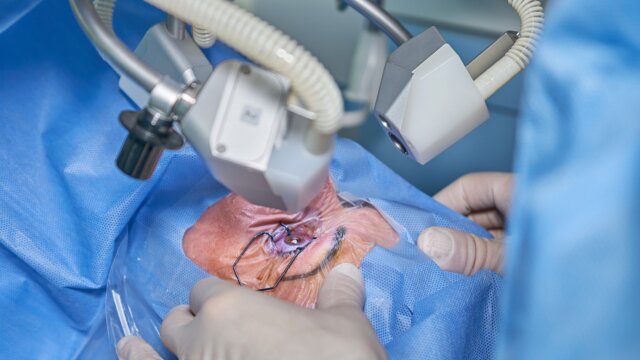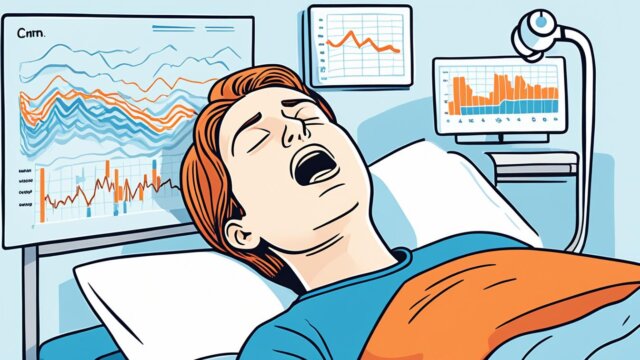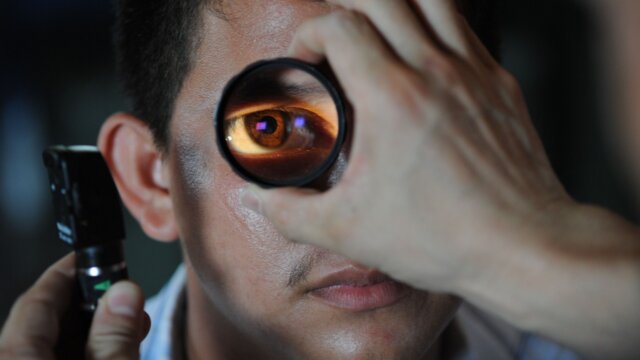FTC disclaimer: This post may contains affiliate links and we will be compensated if you click on a link and make a purchase.
About 550 new cases of primary bone cancer are found in the US each year. This makes it a rare but serious issue. Osteosarcoma, the most common type, usually hits teenagers and young adults.
Chondrosarcoma mainly affects middle-aged and older adults. It often affects the pelvis, hip, and shoulder. Ewing sarcoma, another type, mostly affects kids and young adults. It often affects the leg bones and pelvis.
Even though bone cancer is rare, knowing its symptoms, causes, and treatments is key. This knowledge helps manage it effectively and on time.
Key Takeaways
- Bone cancer is a rare but serious condition, affecting only 3,000 people per year.
- Osteosarcoma, Chondrosarcoma, and Ewing sarcoma are the three main types of bone cancer, each with distinct characteristics and age groups affected.
- Inherited genetic syndromes and certain bone conditions can increase the risk of developing bone cancer.
- Early detection is crucial, as bone cancer may be painless in its early stages, leading to difficulty in diagnosis.
- Specialized treatment, including limb-sparing surgery, can significantly improve outcomes for many bone cancer patients.
What is Bone Cancer?
Definition and Overview
Bone cancer, also known as primary bone cancer or skeletal malignancy, is a rare cancer that starts in the bones. It’s different from secondary bone cancer, which spreads to the bones from another place. Primary bone cancer begins in the bone itself.
Bone cancer can happen in any bone, but it often affects the long bones in the legs or upper arms.
Primary Bone Tumors can be either benign (non-cancerous) or malignant (cancerous). Benign tumors are more common, but malignant tumors, or Bone Cancers, are what we’re focusing on.
Metastatic Bone Disease is when cancer moves to the bones from another area. It’s more common than primary bone cancer. Cancers like breast, lung, kidney, thyroid, and prostate often spread to the bones.
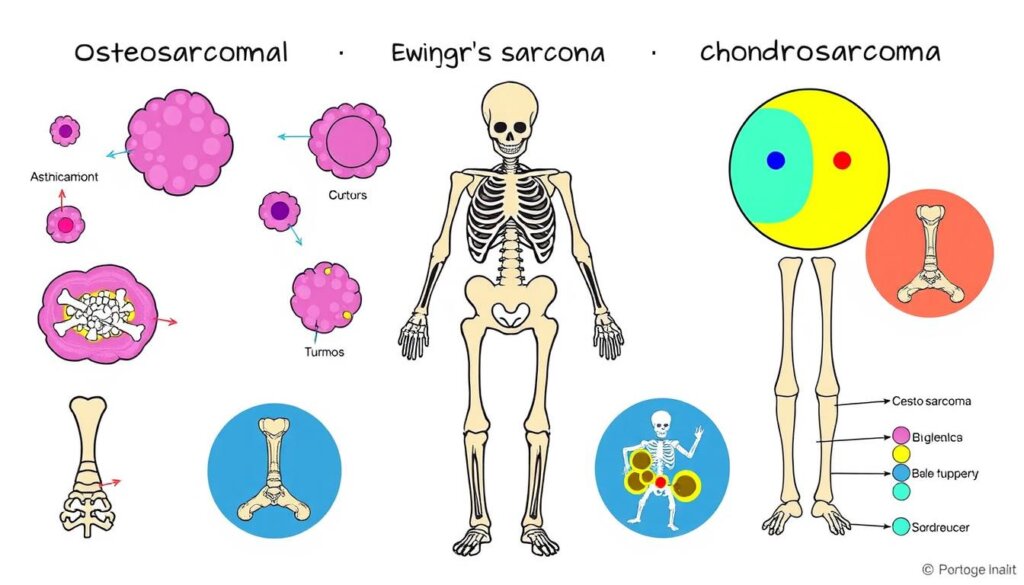
Knowing about primary bone cancer is key for finding and treating it well. This part will cover the different types of bone cancer, their signs, and why going to cancer centers is important for the best care.
Types of Bone Cancer
Bone cancer comes in different forms, each with its own traits and treatment plans. The main types are Osteosarcoma, Chondrosarcoma, and Ewing Sarcoma.
Osteosarcoma
Osteosarcoma is the most common bone cancer, mostly found in young people between 10-30 years old. It also affects people over 60 in about 1 in 10 cases. This cancer starts in bone cells. The five-year survival rate is 60%, but it goes up to 74% if caught early.
Chondrosarcoma
Chondrosarcoma is the second most common bone cancer, rare in those under 20. It becomes more common with age. Chondrosarcomas are graded from 1 to 3, with grade I growing slowest and least likely to spread. The five-year survival rate is 75.2%.
Ewing Sarcoma
Ewing tumors are common in children, teens, and young adults and are the third most common bone cancer. They are rare in adults over 30. Ewing tumors are more common in white people and rare in African Americans and Asian Americans. The five-year survival rate is between 40% to 60%.
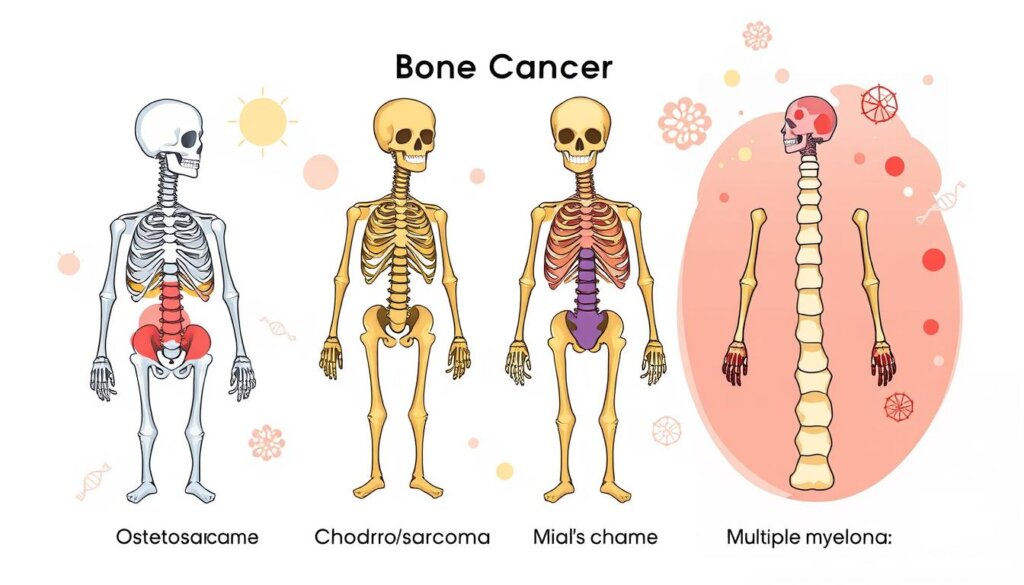
Other, less common bone cancers include fibrosarcoma, malignant fibrous histiocytoma, giant cell tumor, and chordoma. Each has its features and survival rates.
Knowing about the different bone cancers is key for patients and doctors to find the best treatment.
Symptoms of Bone Cancer
Common Signs and Symptoms
Bone cancer can show many symptoms. The most common is bone pain that doesn’t go away. This pain starts slow, worsens, and hurts more at night or when moving.
Other signs include swelling, redness, and a lump on the bone. You might also notice your bones breaking more easily.
Less common signs are a high fever, losing weight without trying, and sweating a lot at night. This can mean the cancer is growing fast.
But, these symptoms can also mean other things, not just cancer. See a doctor if you have ongoing pain, swelling, or breaks. They can find out what’s really going on.
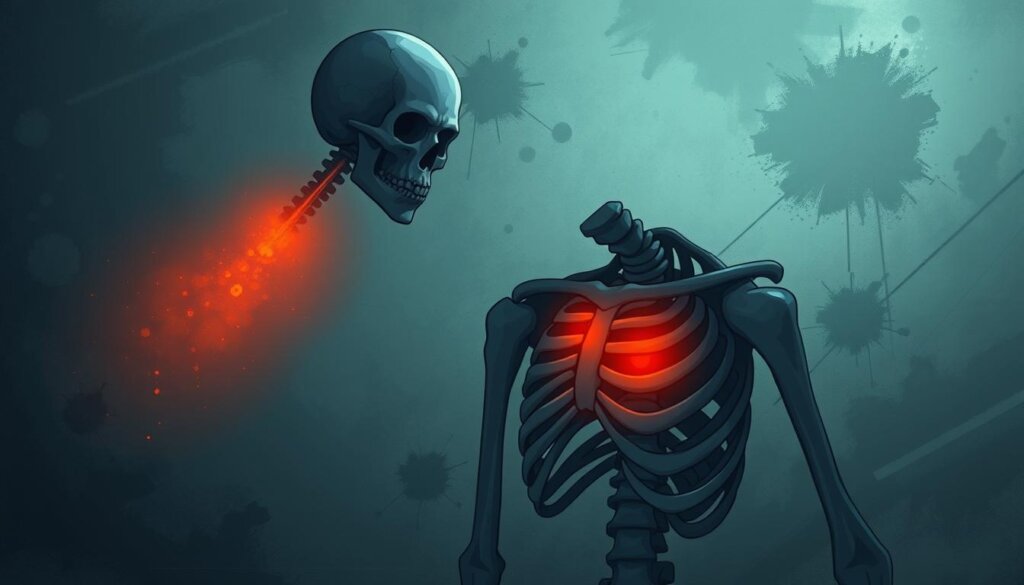
“Bone pain is the most common symptom of bone cancer, followed by swelling, redness, lumps, and fractures.”
Rare signs include a high fever, losing weight, and sweating a lot at night. These can show the cancer is getting worse.
Some people are more likely to get bone cancer because of their genes or past health. For example, those with Paget’s disease or Li-Fraumeni syndrome are at higher risk.
Causes and Risk Factors
Most bone cancers have no known cause. However, some things can make you more likely to get them. Knowing these can help prevent and catch them early.
Genetic Conditions and Underlying Diseases
Some genetic conditions, like Li-Fraumeni syndrome, increase bone cancer risk. People with Paget’s disease of the bone or benign tumors are also at higher risk for chondrosarcoma. Kids with tuberous sclerosis face a higher chance of getting chordoma.
Radiation Exposure
Being exposed to radiation, especially from cancer treatments, raises bone cancer risk. Those who got radiation or chemotherapy young or in high doses might face a slightly higher risk.
Genetic changes in bone cells can also lead to bone cancer. These changes, or mutations, can cause cells to grow out of control, forming tumors.

Even with these risk factors, only a small number of people will get bone cancer. Scientists are still studying how genetics, environment, and cancer interact.
Bone Cancer Diagnosis
Diagnosing bone cancer takes a few steps. First, your doctor will check you physically and ask about your health history. Then, they might use X-rays to see if there’s anything wrong with your bones.
If X-rays don’t show enough, they might use MRI, CT scans, PET scans, or bone scans. These tests give a clearer picture of the problem area.
A biopsy is the best way to know for sure if you have bone cancer. It means taking a small piece of bone to check in a lab. This tells your doctor the type and how far it has spread.
How far the cancer has spread is called staging. In the UK, there are stages 1, 2, and 3. Stage 1 and some stage 2 cancers are easier to treat. But stage 3 is harder.
Getting a bone cancer diagnosis can be very stressful. Talking to your doctor and groups like the Bone Cancer Research Trust is good. They can help you feel better emotionally.
Imaging Tests for Bone Cancer Diagnosis | Description |
|---|---|
X-ray | Provides initial imaging of the affected bone to detect abnormalities. |
MRI (Magnetic Resonance Imaging) | Generates detailed, cross-sectional images of the bone and surrounding tissues. |
CT (Computed Tomography) Scan | Produces detailed, three-dimensional images of the bone, allowing for a closer examination of the tumor. |
PET (Positron Emission Tomography) Scan | Detects metabolic changes in the bone, which can help identify the presence and extent of the cancer. |
Bone Scan | Utilizes a small amount of radioactive tracer to highlight areas of abnormal bone activity, including potential cancer sites. |
To really understand bone cancer, doctors use many tests. These include imaging tests and a biopsy. This helps them plan the best treatment for you.
“Seeking support from specialized organizations can be incredibly helpful for bone cancer patients, providing invaluable resources and a community for coping with this challenging diagnosis.”
Bone Cancer Treatment
Treating bone cancer often involves a mix of therapies. These are chosen based on the type and stage of the disease. The main goal is to eliminate cancer cells while keeping healthy bone and tissue.
Common Treatment Options
Surgery is a common treatment for bone cancer. It may involve removing the cancerous bone part and replacing it with a prosthetic or graft. Sometimes, amputation is needed if the cancer has spread too far or can’t be safely removed.
Chemotherapy is often used with surgery to kill any leftover cancer cells and stop the disease from coming back. It can be given before surgery to shrink the tumor or after to lower the chance of it coming back.
Radiation therapy is another key treatment. It can be used before or after surgery to kill cancer cells. It also helps manage pain and symptoms when a cure isn’t possible.
In some osteosarcoma cases, a drug called mifamurtide is used with chemotherapy to lower the chance of cancer coming back.
The treatment plan depends on the bone cancer type, stage, and the person’s health and wishes. Regular check-ups are important to watch for cancer coming back or side effects from treatment.
“The key to successful bone cancer treatment is a multidisciplinary approach, combining the expertise of oncologists, surgeons, and other healthcare professionals.”
Bone Cancer and Its Impact
Dealing with bone cancer is tough, but new medical knowledge and treatments offer hope. Primary bone cancer makes up about 0.2% of all cancers worldwide. In the U.S., 3600 new cases were found in 2020, with 1720 deaths. Thanks to better understanding, many patients now have a better outlook and quality of life.
Bone cancer affects a person’s body and mind. Osteosarcoma, the most common type, makes up 80% of all osteosarcomas, and men are more likely to get it. Ewing sarcoma, which often strikes at 15, also shows a male bias. Knowing each type helps doctors create better plans that focus on the patient’s quality of life and survivorship.
Bone Cancer Subtype | Prevalence |
|---|---|
Chondrosarcoma | 40% |
Osteosarcoma | 28% |
Ewing Sarcoma | 34% in children and adolescents |
“Tests like X-rays and MRI scans help diagnose bone cancer,” each playing a key role. Treatment options include surgery, radiation, and chemotherapy, all chosen based on the patient’s needs and cancer type.
“Bone cancer may recur after treatment, underscoring the importance of regular follow-up visits.”
While bone cancer prognosis has improved, research and new treatments keep evolving. A team effort and support help those with bone cancer face their journey with strength and hope.
The link between bone and cancer has grown stronger, with osteoncology becoming a key field. Medical teams keep working on new treatments, focusing on improving bone cancer patients’ quality of life and survivorship.
Conclusion
Bone cancer is rare but complex. It needs a deep understanding of its types, symptoms, and treatments. Osteosarcoma and Ewing’s sarcoma mainly hit young people. Chondrosarcoma, on the other hand, is more common in older adults.
Early detection and tailored care are key. Research is making progress, offering hope to many. New surgical methods, like limb salvage, are showing better results than amputation.
Using bone turnover markers is also becoming more common. This helps in diagnosing and tracking metastatic bone disease. It could lead to earlier treatment and better outcomes.
Learning about bone cancer and its treatments can help you or your loved ones. A team of experts and ongoing research bring hope for the future.
FAQ
What is bone cancer?
Bone cancer is a rare growth of cells in a bone. It often starts in the thighbone. It’s different from cancer that spreads to bones from other parts of the body.
What are the main types of bone cancer?
The main types are:
– Osteosarcoma: Common in kids and young adults under 20.
– Chondrosarcoma: Affects adults over 40.
– Ewing sarcoma: Mostly hits people between 10 and 20.
What are the symptoms of bone cancer?
Symptoms include persistent bone pain and swelling. You might also notice a lump or a bone that breaks easily. Less common signs are fever, weight loss, and night sweats.
What causes bone cancer?
The exact cause is unknown. But, some factors can raise your risk. These include radiation, certain diseases, and a history of other cancers.
How is bone cancer diagnosed?
Doctors use X-rays and imaging tests like MRI or CT scans. A biopsy is the most accurate way to diagnose it. This involves taking a sample of the bone for lab analysis.
What are the treatment options for bone cancer?
Treatment often includes surgery, chemotherapy, and radiation. For osteosarcoma, a drug called mifamurtide might be used too.
What is the outlook for bone cancer patients?
The outlook depends on the cancer type, stage, and overall health. Bone cancer is easier to treat in healthy people with early-stage cancer. Advances in treatment have improved survival and quality of life for many.



